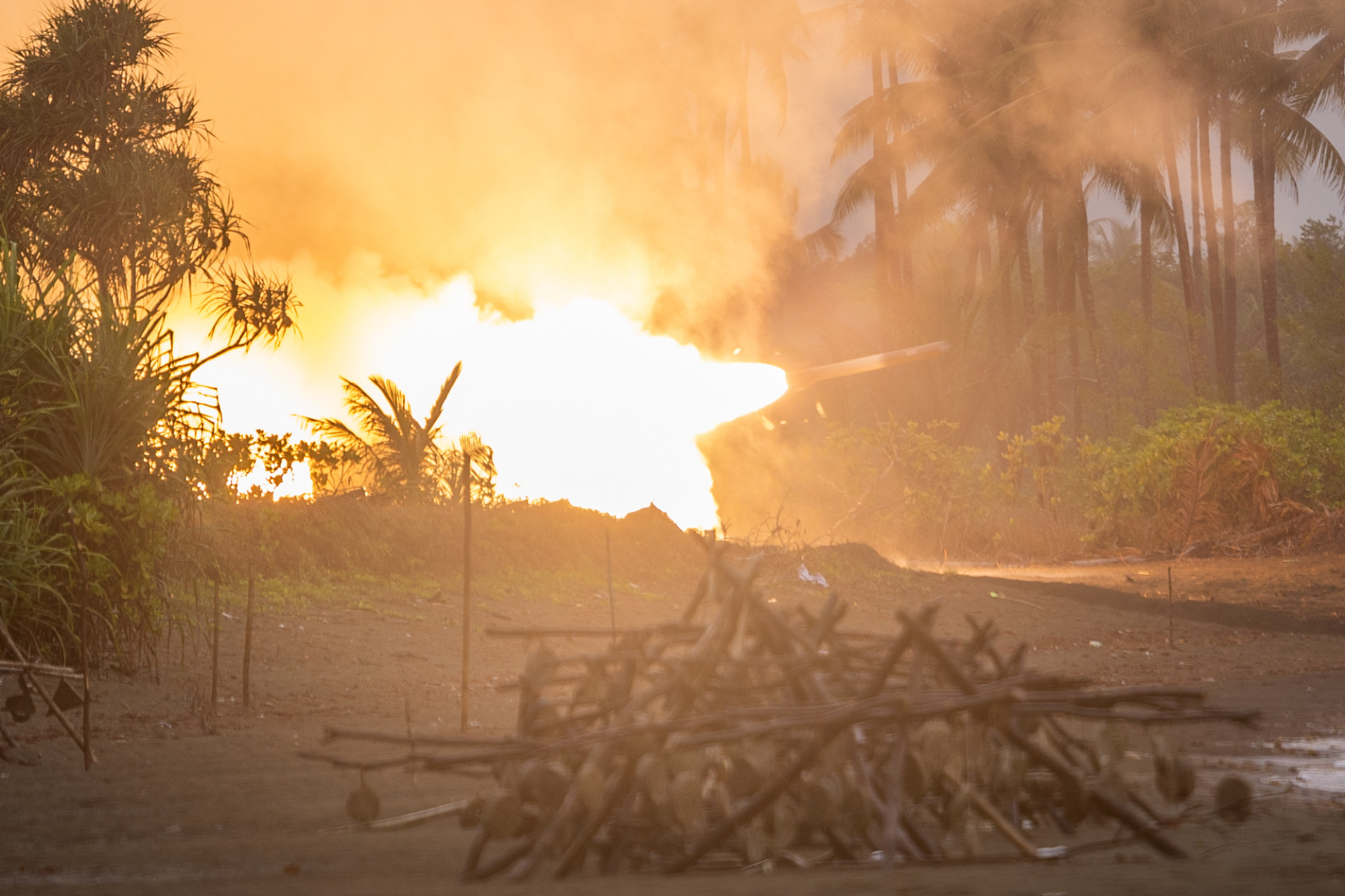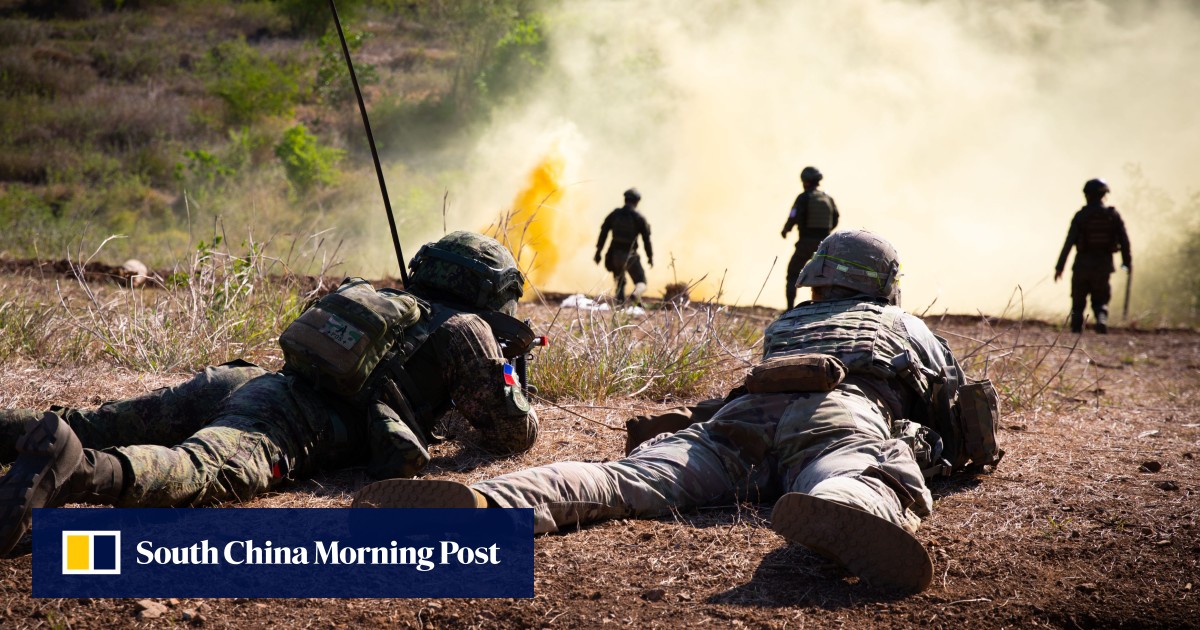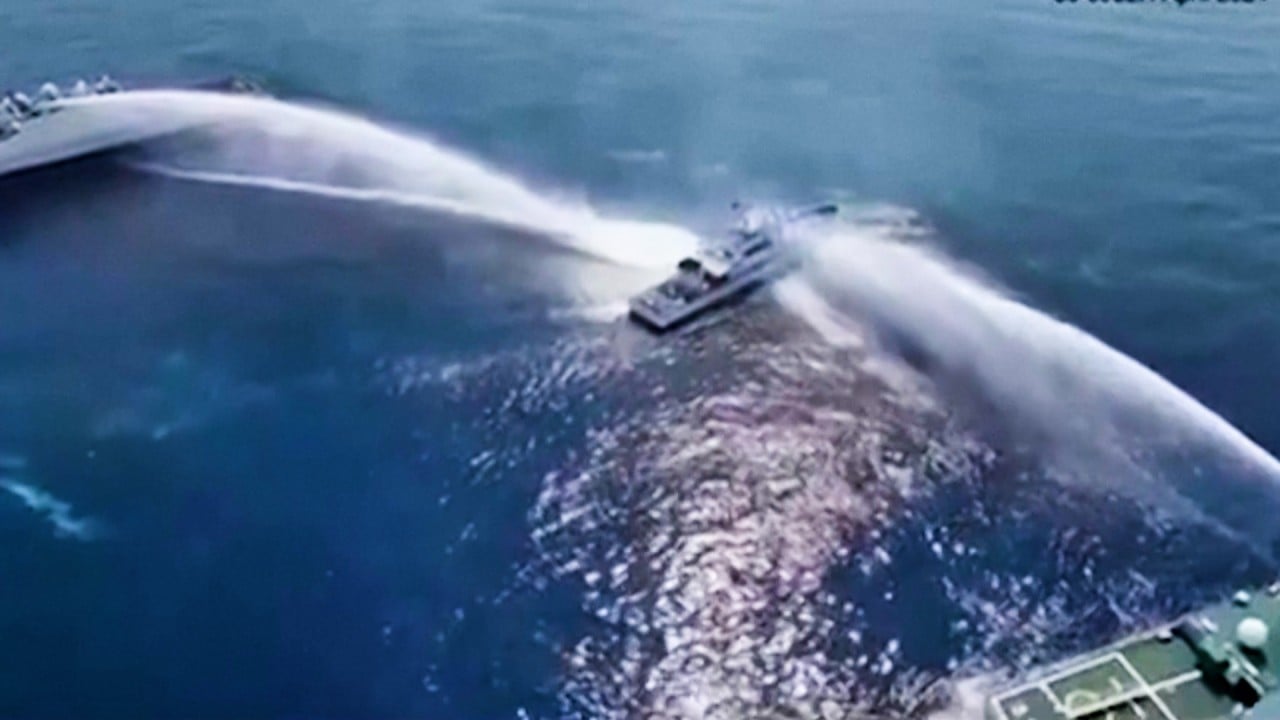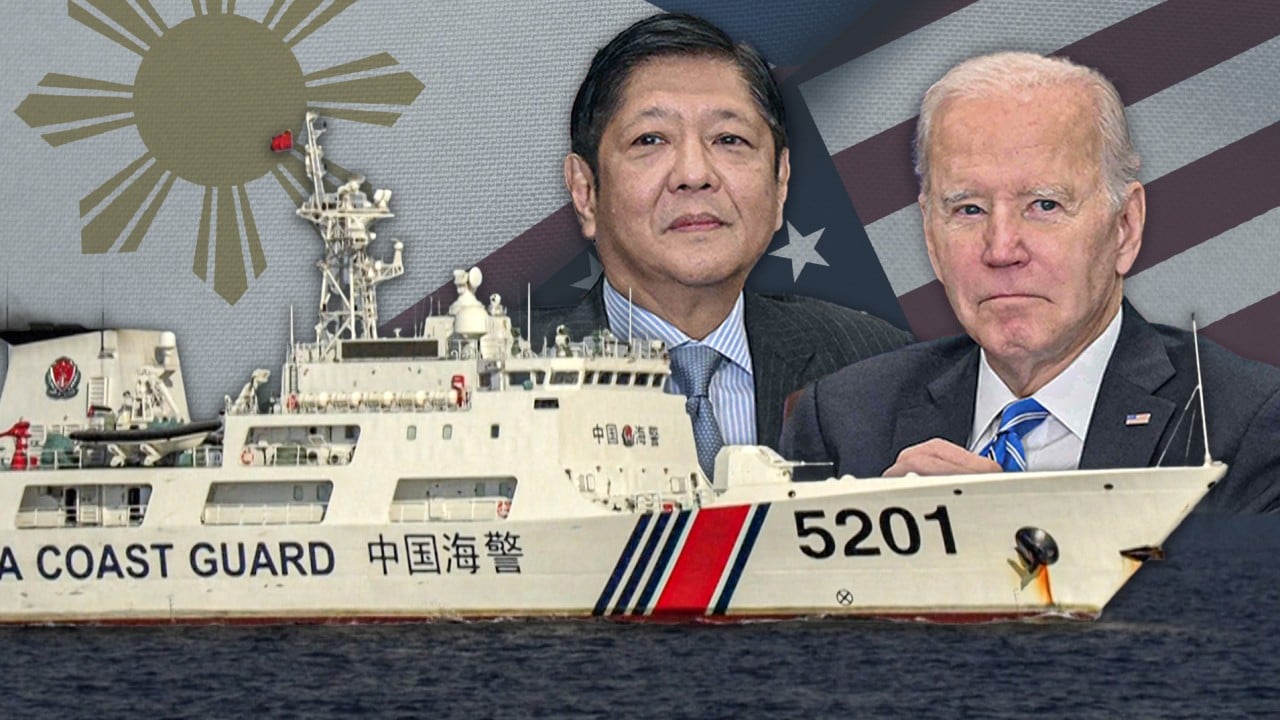Filipino troops followed up by firing rockets aimed at wearing down the attackers, before the two forces finished the job with machine guns, Javelin missiles and more artillery rounds.
Lieutenant General Michael Cederholm, commander of the US First Marine Expeditionary Force, said the exercise was “to prepare for the worst” by “securing key maritime terrain”. “It’s designed to repel an invasion,” Cederholm told reporters at the exercise site.

“Our northwestern side is more exposed,” Major General Marvin Licudine, exercise director for the Filipinos, ahead of the live firing at the La Paz sand dunes near Laoag city.
“Because of the regional problems that we have … we have to already practise and orient ourselves in our own land in these parts,” he added.
It deploys hundreds of coastguard, navy and other vessels to patrol and militarise the waters.
More than 16,700 Filipino and American troops are taking part in the annual military drills – dubbed Balikatan, or “shoulder to shoulder” in Tagalog – in multiple locations across the Asian archipelago. This year’s exercise runs until Wednesday.

The ministers “discussed opportunities to further advance defence cooperation” and to “work together to support states exercising their rights and freedoms in the South China Sea”.
The US Marine Corps said the manoeuvre was a rehearsal for the rapid deployment of the missile system across the Philippines’ South China Sea coast to “secure and protect Philippines’ maritime terrain, territorial waters and exclusive economic zone interests”.
Taiwan’s defence ministry said on Friday it had detected 26 Chinese aircraft and five naval vessels around the self-ruled island in the previous 24 hours.
“To a degree, military exercises are a form of deterrence,” Philippine Foreign Secretary Enrique Manalo was quoted as saying in remarks delivered on his behalf by an aide at a public workshop on Friday.
“The more we simulate, the less we actuate,” he added.



